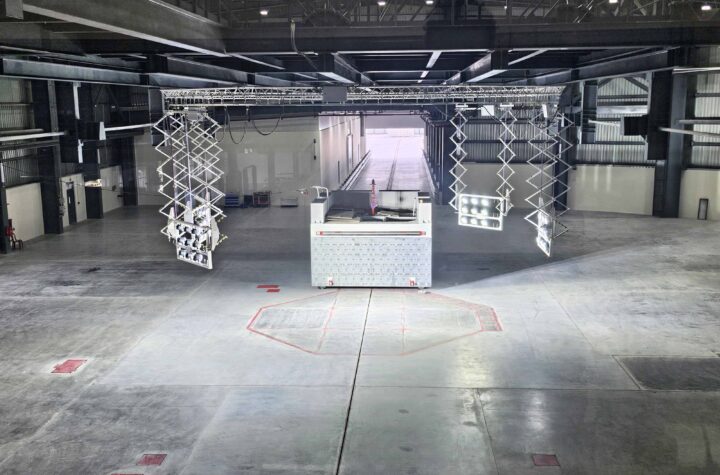
General Motors Co. and the U.S. Department of Energy’s Argonne National Laboratory announced today they have reached a worldwide licensing agreement to use Argonne’s patented composite cathode material to make advanced lithium-ion batteries that last longer between charges and can charge at higher voltages.
“The creation of this battery technology represents an important return on the American investment in innovative vehicle and battery research,” said Energy Secretary Steven Chu. “This agreement gives General Motors the ability to use cutting-edge battery technology throughout its supply chain. The licensing of this technology will also spur the renewal of the American battery industry, creating hundreds of new jobs where they are needed most.”
The agreement with Argonne builds on GM’s commitment to lead the development of vehicle electrification technologies designed to meet the diverse needs of customers around the world, said Micky Bly, GM executive director – Electric Systems, Hybrids, Electric Vehicles and Batteries.
“Engineers and researchers at General Motors are working on next-generation battery systems that will reduce cost while providing improved performance, expanding the practicality and affordability of electric vehicles in the future,” Bly said.
“The goal of Argonne’s battery research is to support the U.S. automobile industry,” said Jeff Chamberlain, who heads Argonne’s Energy Storage Initiative. “The transfer of this technology is a powerful example of how basic research and technology development performed at a DOE national laboratory can produce technology that is useful to U.S. citizens.
“The added benefits of this endeavor are the potential creation of U.S.-based green jobs, lessening U.S. dependence on foreign sources of oil and a reduction in greenhouse gas emissions.”
The cathode material licensed to GM is part of a large, diverse suite of Li-ion battery inventions and patents developed at Argonne with DOE funding. The agency also provided funding for early science research that helped develop this technology. Use of the cathode material will yield advanced batteries that are high-performing, long-lasting and safe when compared to the existing technology that has dominated the market for nearly two decades.
Compared with currently available materials, Argonne’s composite cathode material has a unique combination of lithium- and manganese-rich mixed-metal oxides in a stable materials-design approach that will:
Extend the operating time between charges and increase the calendar life of batteries
Improve the inherent safety of lithium-ion cells
Allow charging at higher voltages, which leads to a substantially higher energy storage capacity
“The fact that GM is including Argonne’s novel composite cathode material in their commercialization process is a testament to the world-class scientists performing research in this area at Argonne and the long-term vision and commitment by DOE,” said Eric Isaacs, Argonne director and president of the UChicago Argonne, LLC, a wholly-owned laboratory management subsidiary of the University of Chicago.
Argonne also announced today that it has licensed its cathode technology to LG Chem for use in battery cells used in the Chevrolet Volt electric car with extended-range capability.
“The scientists and engineers in Argonne’s battery department look forward to continuing this important work for next-generation electric vehicles, as well as for new energy storage technologies for the power grid,” Isaacs said.
“Talented scientists at Argonne have long been a source for industry-leading innovations in the area of automotive research,” said Rep. Judy Biggert, (R-Ill.), a senior member of the House Science, Space, and Technology Committee and long-time champion of federal research efforts. “With support for basic science research from the DOE’s Office of Science and Congress, the work going on right here in our community promises to transform our transportation industry and keep the U.S. economically competitive for years to come. This agreement will help speed those innovations out of the laboratory and into the marketplace, where they can create jobs, benefit consumers and help reduce our dependence on foreign energy.”
About General Motors
General Motors Company (NYSE:GM, TSX: GMM), one of the world’s largest automakers, traces its roots back to 1908. With its global headquarters in Detroit, GM employs 209,000 people in every major region of the world and does business in more than 120 countries. GM and its strategic partners produce cars and trucks in 31 countries, and sell and service these vehicles through the following brands: Buick, Cadillac, Chevrolet, GMC, Daewoo, Holden, Isuzu, Jiefang, Opel, Vauxhall, and Wuling. GM’s largest national market is China, followed by the United States, Brazil, the United Kingdom, Germany, Canada, and Russia. GM’s OnStar subsidiary is the industry leader in vehicle safety, security and information services. General Motors acquired operations from General Motors Corporation on July 10, 2009, and references to prior periods in this and other press materials refer to operations of the old General Motors Corporation. More information on the new General Motors can be found at www.gm.com.
About Argonne
Argonne National Laboratory seeks solutions to pressing national problems in science and technology. The nation’s first national laboratory, Argonne conducts leading-edge basic and applied scientific research in virtually every scientific discipline. Argonne researchers work closely with researchers from hundreds of companies, universities, and federal, state and municipal agencies to help them solve their specific problems, advance America’s scientific leadership and prepare the nation for a better future. With employees from more than 60 nations, Argonne is managed by UChicago Argonne, LLCfor the U.S. Department of Energy’s Office of Science.
Additional information
For additional information on the Chevy Volt go to: http://www.chevrolet.com/pages/open/default/future/volt.do
For additional information on Argonne’s Energy Storage Program go to: https://blogs.anl.gov/major_initiatives/energy-storage/
For information the U.S. Department of Energy’s Vehicle Technologies Program go to: http://www1.eere.energy.gov/vehiclesandfuels/









More Stories
DuPont materials science advances next generation of EV batteries at The Battery Show
Cybord warns of dangers of the stability illusion
How Modern Power Management Enhances Connected Fleet Tech